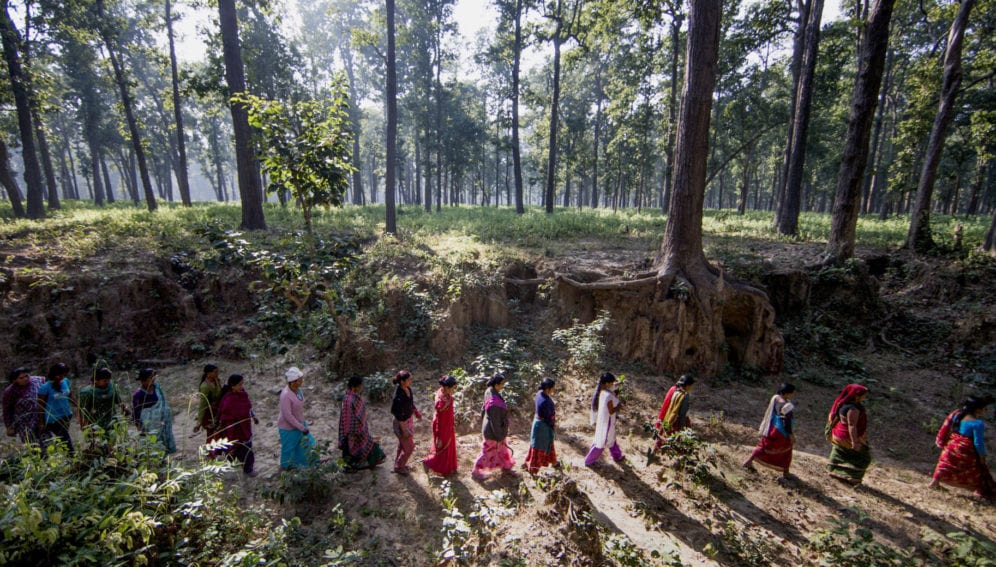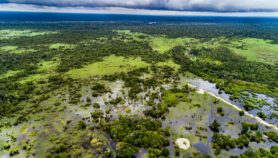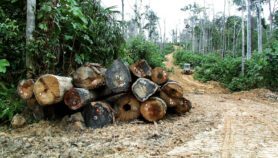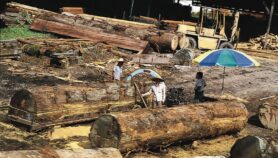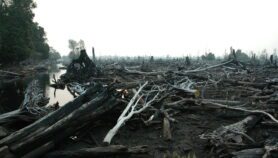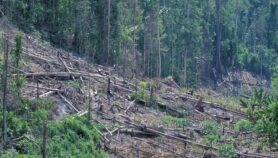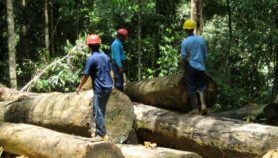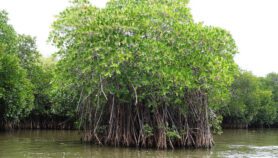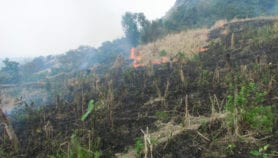By: Shahani Singh
Send to a friend
The details you provide on this page will not be used to send unsolicited email, and will not be sold to a 3rd party. See privacy policy.
[PARIS] Talks on reducing emissions from deforestation and forest degradation (REDD+) — an international mechanism to mitigate carbon emissions by protecting forests — at the Global Landscape Forum in Paris, in December, heard researchers question the equity of benefit-sharing among members of forest communities.
Within the REDD+ framework, developing countries are to be financially rewarded for reducing carbon emissions by protecting their forests. Financial rewards for reduced use of forests are to be shared equally among all members of forest communities, who otherwise depend on the forests for their livelihood.
Findings from a 2014 study in Nepal titled Gender Equality Challenges to the REDD+ Initiative in Nepal, published by the International Mountain Society, show that the REDD+ policy process is inadequate to account for underlying power dynamics, and thus is unable to achieve equity goals.
“It goes back to governance issues,” explains Bhaskar Singh Karky, co-author and environment economist at the Kathmandu-based International Centre for Integrated Mountain Development (ICIMOD). “If local governance is poor, equity will not be possible in REDD+ programmes. My visit this year to a community forestry site in Dhulikhel still revealed basic inequities in gender relations — the women don’t speak up,” Karky tells SciDev.Net.
The Nepal findings also echo the action research in REDD+ programmes in the Yucatan Peninsula, Mexico, and San Martin, Peru, by Andrea Quesada and Phil Franks from the International Institute for Environment and Development (IIED) which says: “REDD+ strives to be equitable, but it often focuses on only part of the picture, so that even apparently-strong strategies (for example those with strong provisions on benefit sharing and forest tenure), may be less equitable on closer inspection”.Reduction of poverty in forest communities, through equal sharing of REDD+ benefits, is meant to be a simultaneous effect of REDD+ programmes. By the Cancun Agreement reached at COP16 in Mexico, the REDD+ mechanism had evolved to be able to contribute to climate change mitigation as well as poverty alleviation, biodiversity conservation amongst others.
Analysis by researchers at IIED says while equity issues are taken into account in policies, they are not always implemented and local communities still feel left out. “Inequalities in sharing of REDD+ benefits result from pre-existing inequalities in society,” Quesada study notes.
REDD+ may reinforce existing inequality if REDD+ policies, programmes, and projects at the local level are not designed and implemented taking gender and other pro-poor issues into consideration, Karky’s paper on Nepal also states.
Therefore, experts agree that making REDD+ gender transformative and equitable depends on the capacity of government, development projects, civil society and forestry institutions for gender analysis and their roles and interests in understanding forest management and development through a gender lens.


